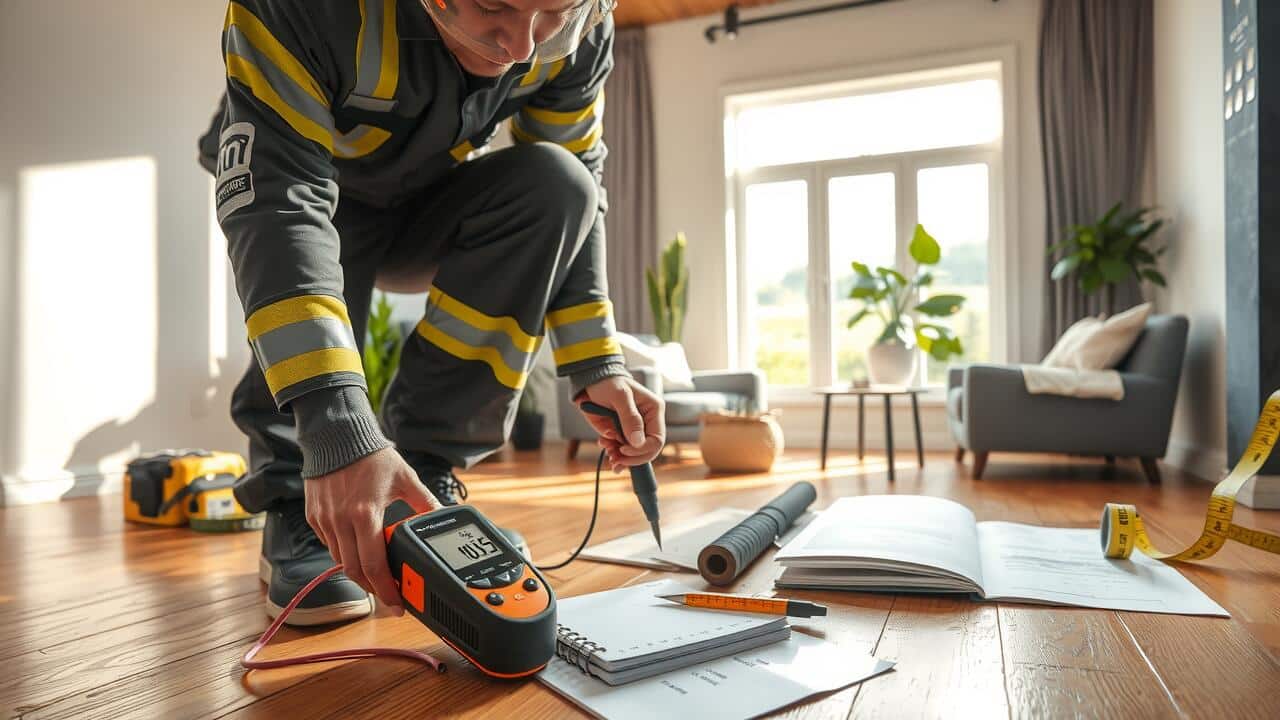
Table Of Contents
Interpreting Moisture Test Results
Interpreting moisture test results is essential for understanding the condition of materials in various environments. The numbers obtained from these tests provide insights into the moisture content of a given substance, which can significantly impact its integrity and performance. A high moisture reading might indicate potential issues such as mold growth or material degradation, while lower readings suggest a dry environment that is more conducive for construction purposes. Understanding what these numbers mean in context helps builders and property owners make informed decisions about repairs and maintenance.
Moisture testing in construction plays a critical role in assessing the suitability of materials before installation. Accurate interpretation of moisture levels helps identify areas that may require additional attention to ensure longevity and safety. Factors such as ambient humidity, temperature, and the materials used can all influence moisture levels. Therefore, analyzing the results in light of these influences enables professionals to devise effective solutions tailored to the specific conditions of a project.
What the Numbers Mean
Moisture testing in various materials provides critical numerical data that helps assess the presence of moisture and its potential implications. The results are typically presented as a percentage, indicating the volume of water within a given material compared to its dry weight. For instance, readings above a certain threshold can signify elevated moisture levels, which may lead to concerns such as mold growth or structural damage. Understanding these figures allows for immediate remediation techniques to be applied, ensuring that any risks are minimized.
Interpreting these numbers requires an understanding of acceptable moisture levels for different materials. For instance, wood generally has a safe moisture content range of 6 to 12 percent, while concrete may handle a bit more depending on its purpose. If the moisture levels exceed these benchmarks, corrective actions become crucial. Moisture testing in construction is vital for creating stable environments, preventing costly repair work, and ensuring the longevity of building materials.
Factors Affecting Moisture Levels
Several factors contribute to the moisture levels within materials and environments. Environmental conditions, such as temperature and humidity, play a significant role. Higher temperatures often increase evaporation rates, while elevated humidity can lead to moisture accumulation. Additionally, seasonal changes can also influence moisture levels, with colder months frequently resulting in condensation on surfaces.
Material properties also affect moisture retention and migration. Different building materials have varying permeability rates, which determine their ability to absorb and release moisture. For example, porous materials may retain higher moisture levels compared to more water-resistant options. Effective moisture testing in these materials is essential to identify potential issues before they escalate, impacting both structural integrity and indoor air quality.
Environmental and Material Influences
Moisture levels within materials can significantly vary depending on environmental factors such as temperature, humidity, and ventilation. For instance, areas with high humidity tend to retain more moisture, making moisture testing in those environments critical for assessing the condition of building materials. Additionally, a lack of proper ventilation can exacerbate moisture retention, creating conditions for mold growth and structural damage.
The type of material also plays a crucial role in moisture retention and evaporation. Porous materials like wood and concrete can absorb moisture, leading to increased readings during moisture testing in these substances. Non-porous materials, such as metal or plastic, generally do not hold moisture in the same way, resulting in lower moisture levels. Understanding these influences helps in accurately interpreting test results and taking appropriate action for maintaining the integrity of structures.
Moisture Testing in Construction
Moisture Testing in construction is a critical practice that helps ensure the longevity and safety of buildings. Excessive moisture can lead to a variety of issues, including mold growth, structural damage, and deterioration of building materials. By conducting moisture tests, builders can identify areas of concern early in the construction process. This proactive approach minimizes risks and can save considerable time and money in repairs down the line.
It is essential to consider the various techniques available for moisture testing in construction. Methods range from non-invasive options, like infrared thermography, to direct measurements using moisture meters and other tools. Each technique has its unique advantages and limitations based on the specific materials and environments involved. Selecting the appropriate method can significantly affect the accuracy of the results, ultimately guiding informed decisions about moisture management strategies within the project.
Importance for Building Integrity
Moisture testing in construction plays a crucial role in ensuring the long-term integrity and stability of buildings. High moisture levels can lead to various problems, including mold growth, deterioration of structural materials, and compromised indoor air quality. By identifying moisture issues early through thorough testing, builders and contractors can take proactive measures to address potential threats before they escalate, safeguarding both the structure and its occupants.
Incorporating moisture testing in the construction process also helps optimize material selection and application methods. Different materials respond uniquely to moisture presence, and knowing their moisture content assists construction professionals in choosing appropriate products and techniques. This attention to moisture management not only enhances the durability of the building but also promotes energy efficiency and lowers maintenance costs over time.
FAQS
What is a moisture test?
A moisture test is a procedure used to measure the amount of moisture present in various materials, such as soil, concrete, or wood, to assess their moisture content and ensure their suitability for construction or other applications.
Why is moisture testing important in construction?
Moisture testing is crucial in construction as it helps identify potential issues related to water damage, mold growth, and structural integrity. By understanding moisture levels, builders can make informed decisions about materials and methods, ensuring the longevity and safety of the structure.
What factors can affect moisture levels in materials?
Several factors can influence moisture levels, including environmental conditions (like humidity and temperature), the type of material being tested, and external factors such as water exposure or drainage systems.
How can I interpret moisture test results?
Moisture test results are typically expressed as a percentage, indicating the amount of moisture contained within a material. Generally, lower percentages indicate drier materials, while higher percentages may suggest a risk for moisture-related problems. It’s essential to compare results against industry standards for specific materials.
Are there different methods for conducting moisture tests?
Yes, there are several methods for conducting moisture tests, including the use of moisture meters, gravimetric testing, and relative humidity testing. Each method has its advantages and is suitable for different types of materials and situations.
